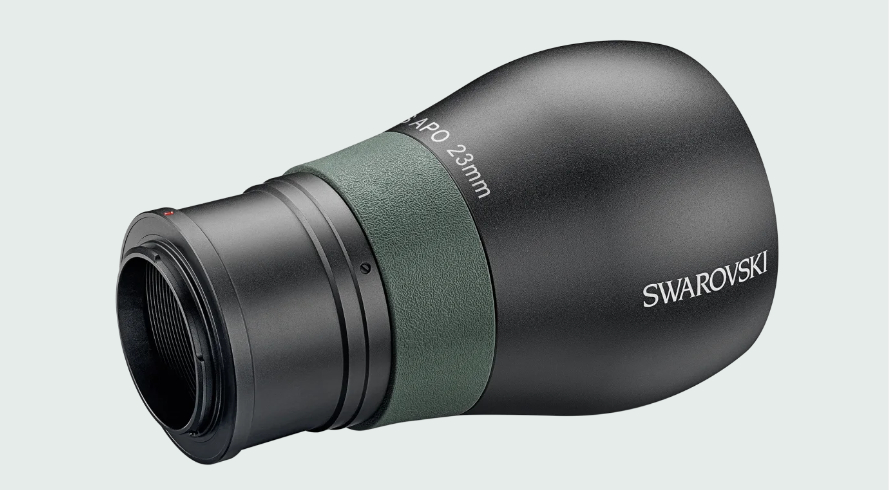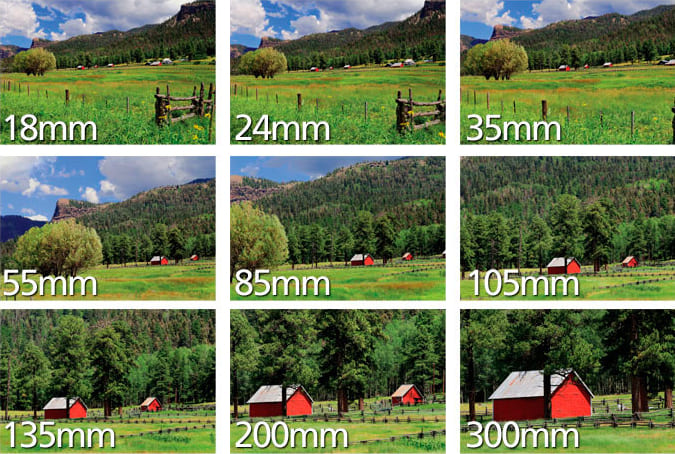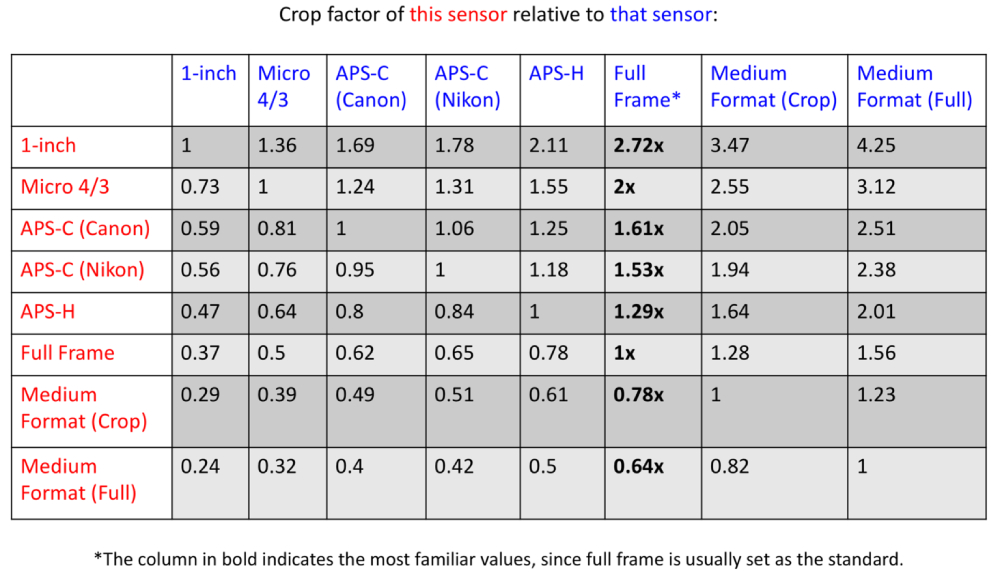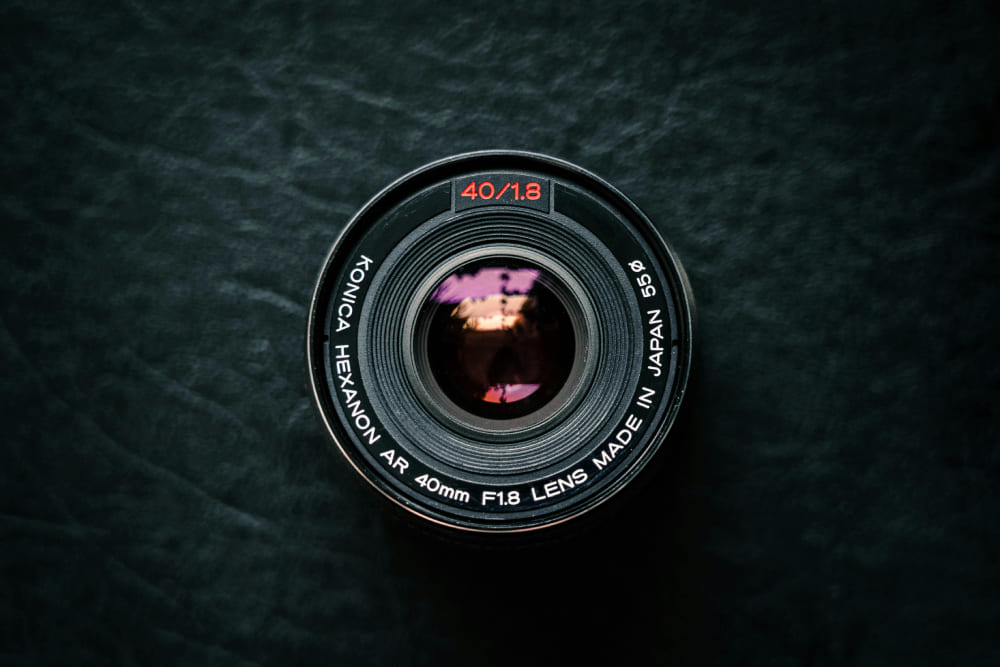The Ultimate Camera Lens Buying Guide: Your Path to Perfect Shots
One of the most prominent advantages of DSLR and mirrorless cameras with interchangeable lenses is the ability to switch between various lenses to capture different subjects.
In fact, it can be argued that using only one lens throughout your photography journey with these cameras would mean missing out on a plethora of experiences and joys.
But how do you choose the right camera lens? What kind of lens is suitable for your needs? In this tutorial, we will share essential knowledge and strategies for selecting the perfect camera lens, ensuring you make an informed decision when purchasing.
So, without further ado, let's dive in and get started.

In this article, you will learn:
- Basic Concept 1: Lens Mount
- Basic Concept 2: Focal Length
- Basic Concept 3: Aperture
- How to Choose the Best Camera Lens?
Basic Concept 1: Lens Mount
Some beginner photographers may assume that they need to use lenses from the same brand as their camera. However, the truth is that lens brands and camera brands are not necessarily directly related.
The crucial factor that determines whether a lens can be attached to your camera is the Lens Mount. When selecting lenses, Lens Mount should be the first thing to consider.

1. Even Same Brand Lenses May Not Be Compatible
Camera manufacturers often have their own designed Lens Mount, and some even have more than one type of mount.
For example, Canon offers five different types of lens mounts: EF, EF-S, EF-M, RF, and RF-S. These correspond to full-frame DSLRs, APS-C DSLRs, M-series mirrorless cameras, full-frame RF mirrorless cameras, and APS-C RF mirrorless cameras, respectively.
If you select the wrong Lens Mount, such as using an EF-M lens designed for M-series mirrorless cameras on an RF mirrorless camera that requires RF lenses, your Canon camera may not be able to use the Canon lens.
How to Check the Lens Mount Type?
You can visit the official website of your camera brand, find your specific camera model, and click on sections like "Product Specifications/Technical Specifications/Detailed Parameters" to check the Lens Mount type. If you're still unsure, you can consult the customer service on the official website.
If you're not familiar with the differences between mirrorless and DSLR cameras, please refer to our tutorial: Mirrorless vs DSLR Cameras: Which is Best for You.
2. Your Camera Can Use Lenses From Other Brands With Matching Mount Types
If a lens manufacturer produces a lens with specifications that match another brand's camera mount, that lens can be used on the camera from a different brand.
Since consumers often consider the range of available lenses when choosing a camera body, major manufacturers such as Canon, Sony, Nikon, and Fujifilm, who have a significant presence in the camera market, generally do not collaborate with their competitors to expand lens options.
This is why you may not have heard of Canon lenses being directly usable on Sony cameras.
Lens manufacturers that cater to other brands either have a much larger lens business compared to their camera business or do not produce camera bodies at all. For example, Swarovski, known for their crystal products, also produces camera lenses.

Lenses that are compatible with the same brand of camera are referred to as "original equipment manufacturer" (OEM) lenses, while those that are compatible with different brands are commonly known as "original design manufacturer" (ODM) lenses.
However, it is challenging to generalize the quality and performance of ODM lenses:
On one hand, the quality and pricing of ODM lenses vary depending on the company's strategy.
Some brands take a high-end approach, resulting in ODM lenses being even more expensive than OEM lenses. Other brands offer outstanding optical quality and excellent value for money. Some brands may have lenses that are not particularly good, but they come at a very affordable price.
On the other hand, the usability of ODM lenses also depends on the attitude of the camera manufacturer.
Some camera brands are open to expanding the lens options through third-party collaboration, ensuring compatibility by providing open mount specifications and even actively inviting third-party manufacturers to cooperate.
The experience with these types of third-party lenses can be very close to that of OEM lenses. However, some brands are reluctant to let others profit from their camera bodies, as they fear it may affect the market for their own lenses.
In such cases, lens manufacturers have to try to reverse-engineer the mount, resulting in slightly lower compatibility with the camera body.
Therefore, it is important to analyze each specific situation individually. We recommend conducting thorough research and referring to authoritative reviews when considering ODM lenses. Additionally, if budget permits, we generally recommend purchasing OEM lenses.
Is it Necessary to Purchase Lens Mount Adapters?
You may have heard of Lens Mount Adapters. With Lens Mount Adapters, you can use lenses with a different mount on a camera.
However, not all mounts can be adapted. And even if they can be adapted, the results are not always perfect. Some lenses perform well when adapted to a specific camera, but others may have issues like noticeable vignetting, lack of autofocus, or slow autofocus.
Therefore, our recommendation is to avoid trying Lens Mount Adapters if possible, especially for beginners. It is not advisable for novice photographers to consider using Lens Mount Adapters.
Basic Concept 2: Focal Length
Focal length is measured in millimeters (mm) and refers to the distance from the center of the lens to the imaging plane of the film or sensor.
However, you don't need to understand the specific definition of focal length. Just know that focal length directly determines the angle of view.
The impact of focal length on the angle of view is as follows:
- Shorter focal length, smaller numerical value, wider angle of view, larger coverage area.
- Longer focal length, larger numerical value, narrower angle of view, smaller coverage area.
You can get a sense of how different focal lengths affect the angle of view by referring to the image below, provided by the Nikon USA website.

If you're not familiar with focal length, you can check out our tutorial: The Ultimate Guide to Focal Length in Photography.
1. Prime and Zoom Lens
Lenses can be classified into prime lenses and zoom lenses.
- Prime lenses are labeled with a single focal length, such as 35mm. They have a fixed angle of view, and photographers cannot zoom in or out to adjust the composition.
- Zoom lenses are labeled with two focal lengths, such as 24-70mm. They have a variable angle of view, allowing photographers to choose any focal length between 24mm and 70mm to adjust the width, depth, and distance of the composition.
Generally speaking, zoom lenses have a wider range of applications and are more practical than prime lenses. That's why most kit lenses provided by manufacturers are zoom lenses.
However, due to manufacturing processes, prime lenses often have a smaller size and a larger maximum aperture than zoom lenses with similar focal lengths.
This means they are more compact, portable, and capable of producing a shallow depth of field blur effect. Additionally, prime lenses often offer better image quality compared to zoom lenses in the same price range.
2. The Focal Length of Lens
We typically refer to lenses ranging from approximately 35mm to 85mm as "standard lens" or "normal lens", as it closely matches the human eye's field of view. Lens longer than 85mm are called telephoto lens, while lens shorter than 35mm are called wide-angle lens.
These categories can be further subdivided, but it's not necessary to be overly concerned about the specific boundaries of "wide-angle" or "standard" since they lack strict, precise, and universally defined ranges.
There are multiple interpretations, so having a general idea of the ranges is sufficient.
Full-frame camera kits usually come with zoom lenses around 24-70mm (for APS-C cameras, it's common to have 15-45mm or 18-55mm). These are the most commonly used focal lengths in everyday photography.
Of course, if you have a specific interest or subject matter like landscapes, wildlife, or concerts, you may also use focal lengths such as 16-35mm, 70-200mm, or 100-400mm.
However, lenses below 16mm or above 400mm are typically considered by professional photographers, and if you're a beginner, it's advisable to choose carefully.
3. Equivalence and Focal Length
If you're familiar with the concept of camera sensor size, you'll know that sensors can vary in size. And when it comes to different sensor sizes, even with the same lens, you'll get different perspectives and effects.
So, when using lenses with the same focal length:
- Smaller sensor cameras have a narrower field of view, capturing fewer elements in the frame.
- Larger sensor cameras have a wider field of view, capturing more elements in the frame.
That's why APS-C cameras (smaller than full-frame) require shorter focal length lenses to achieve the same perspective as full-frame cameras. On the other hand, medium format cameras (larger than full-frame) need longer focal length lenses to achieve the same perspective.
But how much shorter or longer should the focal length be? This is where equivalence comes into play! Equivalence is a numerical value that helps us convert the perspective of cameras with different sensor sizes to that of full-frame cameras.
For example, if the equivalence factor for APS-C is 1.5, using a 50mm lens on an APS-C camera would give you a perspective equivalent to using a 75mm lens (50 x 1.5) on a full-frame camera.
Here, the "50mm" represents the physical focal length of the lens, while "75mm" represents the equivalent focal length that reflects the actual perspective.
Why do we bother with equivalence and comparing to full-frame? This stems from the fact that full-frame is based on the size of the classic 135 film format, which was widely used in the past.
Many photographers are familiar with the perspective achieved by pairing a specific focal length lens with 135 film, making full-frame the benchmark for comparison.
You can refer to the chart below created by Spencer Cox or use the "35mm Focal Length Equivalents" tool to quickly calculate the equivalence for your camera.

Basic Concept 3: Aperture
The aperture is the opening in the lens through which light passes. Most lenses have adjustable apertures that can be made larger or smaller depending on the desired effect.
The aperture value, represented by the f-number, is calculated by dividing the focal length of the lens by the diameter of the aperture. You don't need to remember this complex calculation; we generally use the f-number to describe the size of the aperture.
Common aperture values for photography lenses range from f/1.2 to f/22, although some lenses can go beyond this range.
It's important to note that the actual size of the aperture and the numerical value of the f-number are inversely related. The larger the aperture, the smaller the f-number, and vice versa. For example, f/1.4 represents a large aperture, while f/22 represents a small aperture.

The purpose of designing the lens with such an aperture is primarily for exposure control (although aperture control is not the only method to adjust exposure):
- In bright conditions, we can decrease the aperture to prevent overexposure.
- In dim environments, we can widen the aperture to achieve the desired brightness without making the image too dark.
However, due to the optical design of the lens, the aperture size not only affects exposure but also produces a side effect known as depth of field alteration (which can be understood as the strength of background blur). The specific rule is as follows:
- Larger aperture (smaller f-number) results in shallow depth of field and more pronounced background blur.
- Smaller aperture (larger f-number) results in deeper depth of field and weaker background blur.

If you're not familiar with aperture, you can check out our tutorial: Aperture in Photography.
1. Maximum Aperture
The majority of camera lenses we encounter in our daily lives are variable aperture lenses, meaning the aperture value can be adjusted. So, when you're shopping for camera lens, the lens's aperture value represents the "maximum aperture."
For example, a 50mm F1.8 lens indicates that the maximum aperture can reach F1.8, but you can still choose smaller apertures to shoot with.
Most zoom lenses have a maximum aperture of less than or equal to F2.8, while most prime lenses have a maximum aperture greater than or equal to F2.8.
Prime lenses generally have larger maximum apertures, making it easier to achieve a noticeable background blur effect.
Furthermore, lenses with similar focal lengths that were designed around the same time tend to have higher-end and more expensive options with larger maximum apertures. However, this is a general observation and not an absolute rule.
Additional Tips:
While large aperture lenses are more capable of creating a blurred background effect and often come with higher price tags, it's important to note that a large aperture does not automatically equate to an excellent high-end camera lens.
Designing large aperture lenses requires a high level of craftsmanship, and some camera lenses on the market prioritize a large aperture without maintaining acceptable image quality when shooting at maximum aperture.
Before purchasing a camera lens, it's crucial not to blindly rely on a large aperture. Take the time to carefully choose, consult authoritative reviews, and make a rational decision.
2. Variable Aperture Lenses VS Fixed Aperture Lenses
When it comes to zoom lenses, there are two types: Variable Aperture Lenses and Fixed Aperture Lenses.
The way to distinguish between them is quite simple: Fixed Aperture Lenses only have one aperture value listed in the model, such as 24-105mm F4. This means that no matter what focal length you choose, the maximum aperture will always be F4.
On the other hand, Variable Aperture Lenses have two aperture values, like 24-105mm F3.5-5.6. This doesn't mean that the lens has a maximum aperture of 3.5 and a minimum aperture of 5.6.
It means that as the focal length changes, the available maximum aperture also changes. It could be 3.5, it could be 5.6, or it could be a value between 3.5 and 5.6.
Generally speaking, Variable Aperture Lenses are easier to manufacture, have relatively lower image quality, and come at a lower price point. However, they are usually lighter compared to Fixed Aperture Lenses, making them more suitable for outdoor travel photography needs.
So, which type of camera lens is the best choice will depend on how you weigh the balance between lens quality and cost.

How to Choose the Best Camera Lens?
In the final section of our camera lens buying guide, we'd like to share some tips on how to choose the right lens for yourself.
When it comes to lens selection, there is no right or wrong choice. Choosing a lens is highly personal, just like choosing what clothes to wear, there's no right or wrong answer.
If we had to establish some guidelines for choosing a camera lens, there are only two principles:
- Affordability: Make sure it fits within your budget.
- Enjoyment of Use: Choose a lens that you'll enjoy using.
Ultimately, the best lens for you is the one that you can afford and enjoy using.
Of course, the process of buying a camera lens is not as ideal as we may make it sound, considering it can be a significant expense. So here are some suggestions for buying a camera lens:
1. Consider Purchasing a Kit Lens
Enjoyment comes with sufficient understanding. Therefore, for beginners who have never used a camera before, even with countless tutorials and recommendations, it can be challenging to have an intuitive sense of focal length and aperture, and thus difficult to determine their preferred lens type.
If you are a novice just starting out in photography, we suggest considering purchasing a camera with a kit lens.
While kit lenses may not be high-end or extraordinary, they serve as affordable standard zoom lenses that are adequate for everyday shooting. Additionally, they can serve as a reference point for evaluating other lenses in the future.
The experiences you gain from using a kit lens will guide you toward discovering the lens types you truly enjoy.
2. Consider Different Shooting Scenarios
Generally speaking, different camera lenses are suitable for different shooting scenarios. For example, wide-angle lenses are great for capturing expansive landscapes, while telephoto lenses are ideal for wildlife photography.
However, as we mentioned above, camera lens selection is highly personal. For instance, experienced photographers may recommend using an 85mm prime lens with a large aperture for portrait photography, but that doesn't mean you must use it for portraits.
There is no right or wrong choice when it comes to lens selection, and there are no "shoulds" or "musts". So, as long as you enjoy it, you can absolutely use a wide-angle lens to capture portraits if that's what you prefer.
3. Don't Stress About Getting it Right the First Time
If you feel immense pressure when buying a camera lens, thinking that it's a once-in-a-lifetime decision, you really don't have to.
You should realize that finding your favorite and most suitable camera lens is a process that requires multiple purchases and trials to adjust and optimize your lens collection.
You might think, "I understand the concept, but my wallet doesn't allow it."
However, the reality is that camera lenses are different from many other digital products. They have extremely slow update cycles and no concept of a limited lifespan. They hold their value well, and the better the lens, the more it retains its value.
So, if you end up not liking the lens you purchased, selling it on eBay or another platform is not a difficult task.
4. Embracing the Power of Post-Processing
While it's essential to invest in quality lenses, it's equally important to explore the magic of post-processing. Many times, despite our best efforts, some of our shots may not turn out as expected due to various factors.
However, with the help of post-processing software, such as Lightroom Classic and Photoshop, we can transform these seemingly wasted shots into stunning masterpieces. And that's where TourBox comes in as an invaluable tool.

TourBox is a fantastic companion for photo editing software. Its intuitive design and customizable controls make it a breeze to navigate through the editing process.
With TourBox, you can effortlessly adjust exposure, fine-tune colors, apply precise brush strokes, and much more, all with the convenience of physical buttons and knobs. This tactile experience enhances your editing workflow, allowing for a more immersive and efficient post-processing experience.
The journey of photography doesn't end with the click of a shutter; it continues with the magic of post-processing. Let TourBox be your trusted companion on this creative journey.
Our camera lens buying guide comes to an end, and we hope it has been helpful to those of you looking to purchase camera lenses.